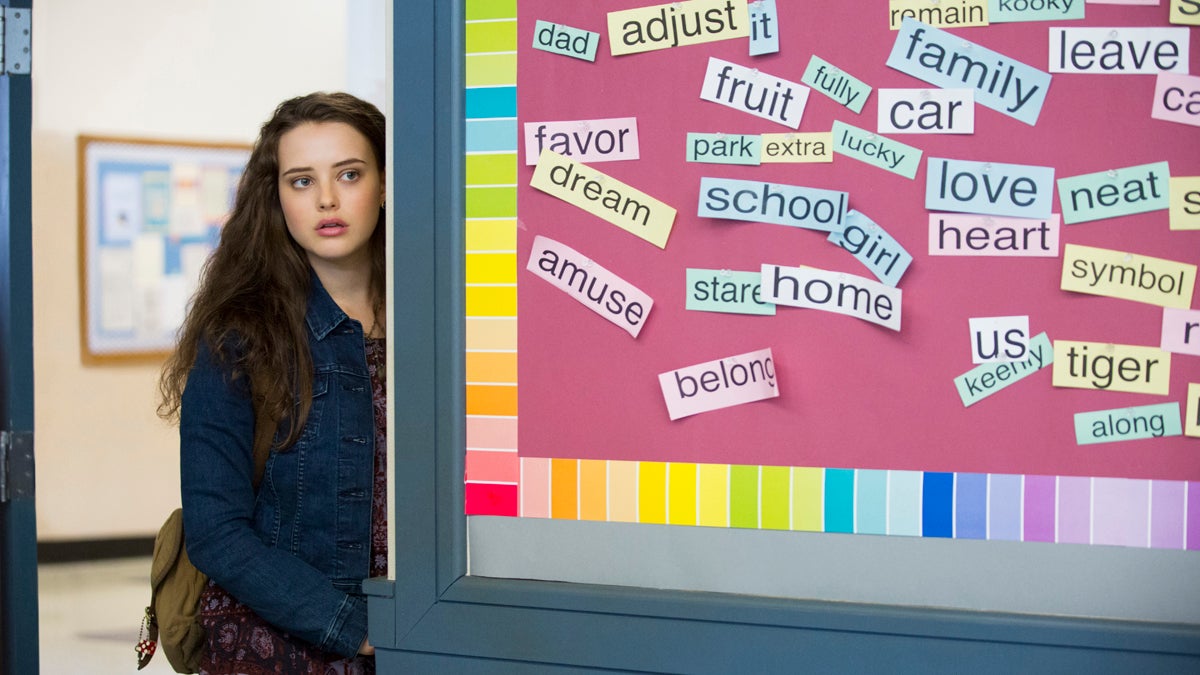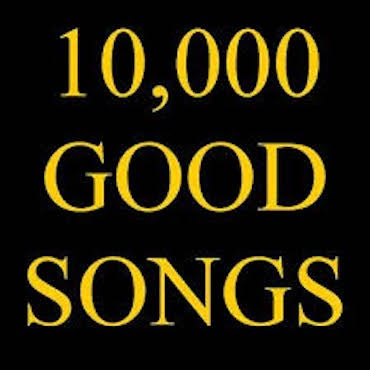Netflix drama on teen suicide prompts fears of copycats
Listen
This image released by Netflix shows Katherine Langford in a scene from the series, '13 Reasons Why,' about a teenager who commits suicide. The stomach-turning suicide scene has triggered criticism from some mental health advocates that it romanticizes suicide and even promoted many schools across the country to send warning letters to parents and guardians. The show’s creators are unapologetic, saying their frank depiction of teen life needs to be 'unflinching and raw.' (Beth Dubber/Netflix via AP)
Parents, mental health experts and teachers are nervous and upset over the super popular Netflix series 13 Reasons Why. The show is about a teen who commits suicide — and the classmates she leaves behind. There’s concern that the show romanticizes suicide and should not be watched by vulnerable youth.
The series is about a teen named Hannah Baker, who takes her life, and a boy named Clay, who’s trying to figure out why. Hannah has left behind behind audio tapes that explain the events that led up to her suicide. She talks about bullying, broken friendships and sexual assault.
Valentina Rosario is a high school senior at El Centro de Estudiantes High School in North Philadelphia. She sports peachy pink nails — with silver polish on her ring fingers.
Rosario, a transgender woman, said she has had her share of mental health struggles. While she doesn’t think the series is perfect by any means, she said she really “vibes” with Hannah Baker.
“I really feel for her, and I really feel, you know, her loneliness at point of times,” she said.
Rosario is 20 now, and it’s taken her a while to move toward getting her diploma. Before transferring to El Centro, Rosario said high school was an awful experience.
“Oh my goodness, it was hell,” she remembers.
And for her, that’s what the show gets right.
16 year old Zaina Diaoune from Philadelphia agrees that the show’s portrayal of high school is spot on.
“I believe that what happened to her, that definitely goes on. I haven’t experienced it. But I know that it’s happening. I feel like the show is very like, realistic.”
But for Jonathan Singer, an associate professor of social work at Loyola University in Chicago, and for school districts and mental health professionals around the country, the show gets a lot wrong, especially for vulnerable youth like Rosario.
First of all, he thinks the show romanticizes suicide by showing that Hannah seemingly gets more attention and power after her death than before.
“I think it’s horrible that the only way that Hannah was able to have people hear her and understand her was to kill herself. The second thing, and it’s related, is this myth that you will be able to control the narrative after you’re dead,” he said.
And there’s the very serious issue of contagion, which the CDC defines as, “a process by which exposure to the suicide or suicidal behavior of one or more persons influences others to commit or attempt suicide.”
“There is enough research to say that when media reports and when suicide is sensationalized in the media – that there is some increased risk for those people already at risk,” said Singer.
He takes issue with the show’s decision to show Hannah’s suicide in graphic detail, instead of letting the camera linger on her face — or devote more time to her grieving parents after they discover her.
“I’ve heard from folks who’ve survived suicide attempts that that depiction was one of the most disturbing things they’ve ever seen. And that includes their own suicide attempt.”
Both Rosario and Diaoune agree that scene was overwhelming.
“It was a little hard to watch, I had to like put my phone up, so I didn’t really see it,” said Diaoune.
Watching hours of a show with graphic images and heavy themes can be too much for some kids, said Singer.
“And so you just binge watched the show and you feel like there’s nobody out there who can really help you,” he said, adding later that the producers could have done more to connect viewers to resources.
In a statement, a Netflix spokesperson said, “We’ve heard from our members that 13 Reasons Why has opened up a dialogue among parents, teens, schools and mental health advocates around the intense themes and difficult topics depicted in the show.”They added that the company worked with mental health professionals in producing the show. Netflix did produce a documentary called “Behind the Reasons,” that provides more resources and dialogue about suicide and sexual assault.
Variety reported that Netflix will start adding another warning card before the first episode and will include more language around resources.
Dr. Doug DiRaddo is a school psychologist in the Brandywine School District in Delaware. The professional organization he belongs to — the National Association of School Psychologists — wrote a letter for educators echoing some of Singer’s concerns.
“One of our things we put out in our considerations for educators is that we don’t recommend that vulnerable youth, especially those who have suicide ideation watch this series,” he said. Especially not, “without someone there to help, process it with them,” adds DiRaddo.
But DiRaddo contends that a lot of vulnerable youth don’t have that caring adult who can help them talk through their feelings.
His school district is trying to get ahead of the problem by publishing a blog post with resources for parents.
“The biggest thing is the kids are going to watch this series. So in light of that, how can we help parents, give parents some tools to say if you’re child is going to watch this, how best can you act or react and be the frontline resource for your own children?”
The mental health organizations JED and Suicide Awareness Voices of America released talking points about suicide for mental health professionals and educators. In them, they dispel the myths that suicide is the fault of survivors — or that suicide is ever heroic or romantic.
While Singer thinks the show missed several important opportunities to spread the message of suicide prevention, there is an area where he and Rosario, the high school senior agree. And that is that the show has some value for adults who might not remember the intense emotions that can be part of the high school experience.
For Rosario, the best takeaway from the show is, “how we can be so blind to people in general. Like everyday high schoolers, who come into school and seem sort of nonchalant about their lives. And how things can actually be going on with them and how we need to work together as a community in schools and out of schools to reach those type of people.”
Beyond watching a person’s struggle on a TV show — it makes sense to take an interest in the people around you — who might be suffering.
WHYY is your source for fact-based, in-depth journalism and information. As a nonprofit organization, we rely on financial support from readers like you. Please give today.

